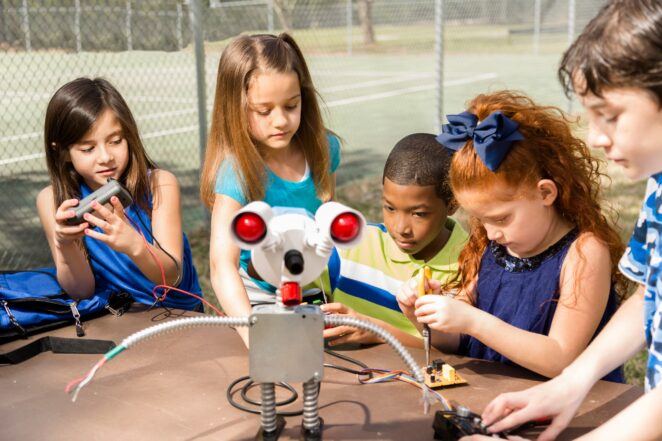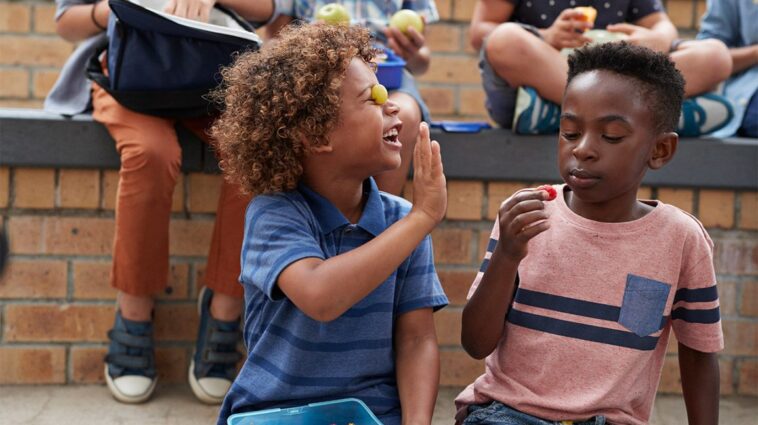Positive self-identity is the key to a fruitful future for children. The kids with a positive self-identity, either intrinsically or cultivated, lead a complete life with less friction. This awareness was not so prevalent before, but now everyone realizes its importance.
Not only parents, and teachers, even companies have started redesigning their way of functioning to meet the challenge. They are beginning to incorporate this value in their message and the product design, like how Lola and the boys do it with girl’s fashion wear.
Understanding Self-Identity

Self-identity is how one recognizes and perceives one’s characteristics and worth, mainly in relation to social context. Self-identity directly affects how one’s life is charted in society, and it develops from a young age.
Kids with positive self-identity tend to be more joyful, pick themselves up whenever they fall and are always ready to explore new things. But negative self-identity pushes the kids into a shell of their own, making them vulnerable to any situations, especially competitions, and making them doubt their worth.
It would be regrettable if children in their prime years were in a shell, cut away from the numerous possibilities that life provides. And this has been affecting children at large in this generation.
Studies show that in children around the age of 3-17 years, 9.4% (approximately 5.8 million) had been diagnosed with anxiety, and 4.4% (approximately 2.7 million) had been diagnosed with depression in 2016-2019. And this percentage has been steadily increasing over the years. While there will be many more factors, self-identity plays a huge role and can be corrected by basic adjustments.
Developing a Positive Self-Identity
Parents have a crucial responsibility to develop a positive self-identity in their children. Creating a positive self-identity doesn’t need arduous tasks, but many small habits must be made consistently. Here are five significant ways parents can help their children develop a positive self-identity.
1. Acceptance is the Key

The root cause of this inability to be secure in their identity comes from this area. Accepting who they are and what they want is the ultimate goal of securing a positive self-identity. So to achieve this, parents and guardians must create an environment of acceptance around the children. One must-
- Be mindful of the language one uses to address the kids. Don’t use negative expressions or terms for them like lazy, worthless, mean, etc. these words though maybe colloquial in their usage, has a significant effect on their tiny minds. So, fill their head with more positive expressions.
- Always support the child’s interests, listen to them, and encourage them in whatever way to achieve their interests. Following their interests and achieving will develop intrinsic confidence.
- Give more opportunities to explore. Do not restrict them to limited possibilities. Let them be free and explore
- Always acknowledge the effort, not the result. There can be only one winner in a competition, but that doesn’t mean all others are losers. Create this knowledge that effort is more important than the result
2. Experiences to Empowerment

Nothing is a better teacher than experience. Giving meaningful experiences help the children to apply everything they have learned and know for themselves. Not all experiences are good in life, so having some faith and making them experience many things will give them confidence and character. To make them ready for all experiences:
- Give them the tasks appropriate to their age, so they can grow to complete them and gain a sense of a “can do” attitude.
- Whenever they come up with problems, they don’t give solutions immediately. Make them work on it and help them to arrive at solutions.
- Assertiveness is an essential quality for dealing with peers and society. It will develop a child’s communication skills and help to state their mind. Please encourage them to be assertive.
- Through all this, make them understand the importance of personal power and value it.
3. The Bond of Family

The child derives his maximum power from the family bond he has. Building a strong sense of unity and care within the family is essential. For this, spending more time with the kids with the familiar touch will ensure their security. And make the time more fun; introducing humor will help turn the environment into a safe and enriching one.
Discipline is essential, but it must stay within the line. Make rules which are reasonable and implement them with care. Don’t try to protect them too much. Make the rules for maintaining good health habits. But let them have the freedom to do wrong and correct themselves.
4. Past and Future

Talk about their family heritage, where they come from, and their history. Children can’t be kept away from their past for long. They will notice them when they mix with different groups, so talk about their identity responsibly to inspire and understand them. Only then can they move ahead in their lives.
And make the bold talk, let them talk about the higher meaning in life, etc. Cultivate a sense of purpose from an early age to make them highly motivated in life.
5. Show and not Tell

The children use their eyes more than their ears. It is better to show them than tell them what to do. So one must be an example for their life, inspiring them at every step. They will imitate you and try to lead a meaningful life.
Conclusion
Building a positive self-identity is a continuous process. Even adults might slip up and fall into the negative pit, so for children, we must take extra care and vigilance to cultivate this quality. In these changing times, where you do not know where the subsequent influence gets to the child, it is best to develop the child to be self-secure and teach the ability to pick oneself whenever one make a mistake. All the above steps are just a start to building the right attitude in the children. And if every child grows with a positive mindset, the world will flourish.




